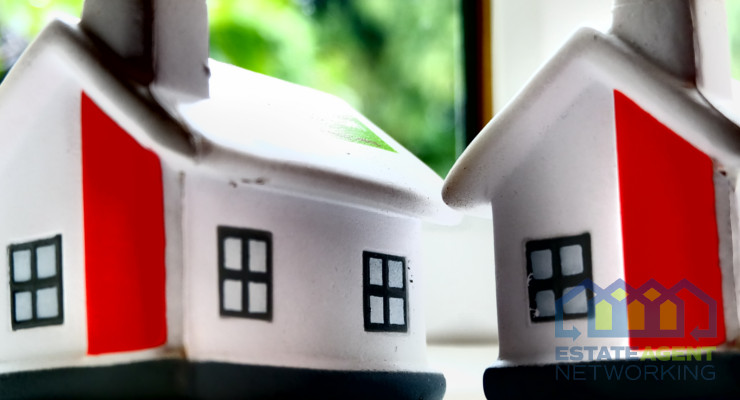BREAKING PROPERTY NEWS – 03/05/2023
Daily bite-sized proptech and property news in partnership with Proptech-X.
3Di Systems Leveraging Software to Simplify Public-Private Housing Partnerships
Recently whilst hosting The London Proptech Show I had the great fortune to meet in person with the CEO of 3Di, Ravi Desai, a company based across the pond who for the past two-decades has been digitally tansforming and modernising how property assets are run, providing over 300-solutions for the benefit of over 20-million people. This quietly spoken and humble man has huge oversight in this area, and I asked him to impart some of his wisdom for us.
In the following piece Ravi Desai tells all about a topic that resonates in many countries including the UK, The affordable housing crisis which affects millions of families across the country, making it difficult for them to find safe and decent housing at an affordable cost.
CEO Ravi Desai says that, ‘In America Public-private partnerships (PPPs, or P3s), offer a promising solution by combining the resources and expertise of both the public and private sectors to create more affordable housing options and ease the burden on struggling families.
‘But housing directors in PPPs must navigate complex challenges in providing affordable housing, including securing funding, managing budgets, maintaining properties, and ensuring compliance with regulations, while balancing the demands of stakeholders and providing high-quality services to residents.
However, with new technologies and the rise of digital transformation, housing directors now have new tools and resources to help them overcome these challenges. By harnessing the power of technologies such as affordable housing software platforms, housing agencies can speed up processes, reduce workloads, and gain valuable insights about housing policies and programs.
Three instances where software platforms help public-private partnerships get better results
To illustrate the ways a strong housing software platform can improve PPPs, consider some of these typical partnership examples.
Constructing new affordable housing units with a private builder
Let’s start with a common example: a city or county government wants to collaborate with a private builder to construct new affordable housing units for families, with a focus on sustainability and energy-efficiency.
There are a lot of steps to make that happen — looking at some of these responsibilities, notice how the government can leverage technology to improve the process.
- Develop and implement project plans: affordable housing software can streamline the project planning process by providing real-time data and analytics on construction timelines, budgets, and resource utilization. This helps housing authorities quickly identify areas of concern and make informed decisions to keep the project on track.
- Monitor construction progress: housing software can also provide real-time updates on construction progress by integrating data from multiple sources (such as project management tools and financial systems), allowing housing authorities to keep track of milestones and ensure that everything is moving forward according to plan. This can help reduce the risk of delays and budget overruns.
- Manage budgets and expenses: Project data can be used to automatically create real-time dashboards, visualizations, and reports, giving housing directors a comprehensive overview of project progress. Users can access financial reporting and budget tracking, making it easier for housing authorities to monitor spending and ensure that the project stays within budget.
- Collaborate with partners: Housing software can provide a centralized platform for communication and collaboration between housing authorities, private builders, and other stakeholders (including payment management tools to accept and allocate funds). Centralized platform tools like electronic document management and incident management help improve coordination, reduce the risk of misunderstandings and bottlenecks, and ensure compliance with established environmental standards.
Improving support service partnerships for residents
Say a local housing authority partners with a private non-profit organization to provide support services to low-income residents, such as job training and financial education.
Consider some of the responsibilities involved, and how affordable housing software could make them easier:
- Developing a comprehensive service program: housing software can assist in the development of a comprehensive service program by providing a centralized platform for collaboration with partners, and easy communication across a variety of channels, from email and SMS to push notifications.
- Implementing program activities: housing software platforms can help simplify the implementation process by automating tasks such as participant enrolment and scheduling, as well as tracking program attendance and outcomes in a case management system. This can help ensure programs are implemented effectively, and that residents receive the support they need.
- Managing funding sources: affordable housing software can assist in the management of funding sources by providing real-time reporting and analytics capabilities, allowing partners to track program spending, funding availability, and results. This can help ensure that funding is allocated effectively to achieve desired outcomes.
- Coordinating with partners: similar to the previous example, a centralized platform improves communication and collaboration between the housing authority and the non-profit, ensuring that everyone is on the same page and that training programs are implemented effectively.
- Evaluating program outcomes: software can assist in the evaluation of program outcomes by providing real-time reporting and analytics capabilities. This can help partners to assess the impact of the program and identify areas for improvement.
Managing a joint venture to preserve and rehabilitate affordable housing units
Here’s another common project: a housing authority enters a joint venture with a private investment firm to help improve and preserve a set of existing affordable housing units.
Looking at some of the tasks involved, how might a software platform help?
- Financial Management: as before, budgeting is easier with software. Software with integrated payment processing can help the housing authority manage and collect fees, fines, taxes, and project funds.
- Property Inventory: a property inventory tool (or preservation database) with a complete and accurate database of rental properties can help the housing authority keep track of their properties, units, and tenants. This can help with effective decision-making and resource allocation.
- Tenant Management: an online tenant portal allows for easy-to-use, secure online communication between tenants and the housing authority. This helps them ensure that tenants are well-informed, and that their needs are properly addressed during the rehabilitation process.
- Maintenance and Repairs: digital case management capabilities can simplify the tracking and processing of maintenance requests, work orders, and repairs. This can help the housing authority address any issues in a timely manner, and make sure nothing falls through the cracks.
- Compliance and Inspections: platforms providing a rental inspection tool with mobile capabilities can simplify the process of inspections and code compliance, helping the housing authority ensure that the updated properties are up to code and meet regulations.
Innovative solutions for better affordable housing outcomes
At the core of any effective public-private partnership is a foundation of organized property data. Rental registries and preservation databases, for instance, provide a comprehensive and up-to-date inventory of rental properties, enabling efficient tracking, monitoring, and management of the affordable housing units involved in the PPP. When we deploy our affordable housing software platform, 3Di Engage for Housing, a database or registry is often at the base of it’.
Top 10 most expensive homes in the UK
Compiled By Kofi Bartels-Kodwo Founder of Millionpoundhomes
The UK is home to some of the most luxurious and extravagant properties in the world. From sprawling estates to elegant townhouses, the country is full of stunning homes that command eye-watering prices. Here are the top 10 most expensive homes in the UK, complete with pictures:
1 Hyde Park, London – £160 million
1 Hyde Park is one of the most prestigious and expensive residential buildings in the world. Located in the heart of London, it boasts stunning views of Hyde Park and the city skyline. The penthouse suite is the most expensive property in the building, with a price tag of £160 million.
Chartwell House, Kent – £15 million
Chartwell House was the former home of Sir Winston Churchill, and it is one of the most historic and iconic properties in the UK. Set in 80 acres of land in the county of Kent, the property has stunning views of the surrounding countryside. It was sold in 2020 for a reported £15 million.
Park Place, Berkshire – £140 million
Park Place is a magnificent country estate located in the county of Berkshire. The property features a main house, a separate staff house, a cinema, and a swimming pool. It was sold in 2011 for a reported £140 million.
Rutland Gate, London – £105 million
Rutland Gate is a Grade II listed townhouse located in the heart of Knightsbridge, one of the most exclusive areas of London. The property features six bedrooms, seven bathrooms, and a private garden. It was sold in 2016 for a reported £105 million.
Updown Court, Surrey – £70 million
Updown Court is a sprawling estate located in the county of Surrey. The property features 103 rooms, a helipad, and an indoor swimming pool. It was sold in 2011 for a reported £70 million.
Heath Hall, The Bishops Avenue, London – £65 million
Heath Hall is a grand mansion located on The Bishops Avenue, one of the most exclusive streets in London. The property features a swimming pool, a gym, and a cinema room. It was sold in 2016 for a reported £65 million.
Parkside House, Wimbledon – £50 million
Parkside House is a stunning mansion located in the prestigious area of Wimbledon. The property features eight bedrooms, a gym, and a swimming pool. It was sold in 2018 for a reported £50 million.
Leopold House, London – £30 million
Leopold House is a modern and luxurious property located in the affluent area of Kensington. The property features six bedrooms, a gym, and a swimming pool. It was sold in 2021 for a reported £30 million.
18 Carlton House Terrace, London – £25 million
18 Carlton House Terrace is a Grade I listed townhouse located in the heart of London. The property features six bedrooms, a cinema room, and a private garden. It was sold in 2017 for a reported £25 million.
Bishops Row, Fulham – £24.5 million
Bishops Row is a stunning mansion located in the affluent area of Fulham. The property features six bedrooms, a gym, and a swimming pool. It was sold in 2018 for a reported £24.5 million.
These are the top 10 most expensive homes in the UK, each one more luxurious and stunning than the last.
Andrew Stanton Executive Editor – moving property and proptech forward. PropTech-X








